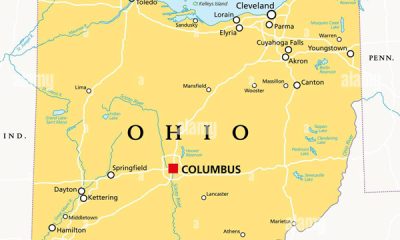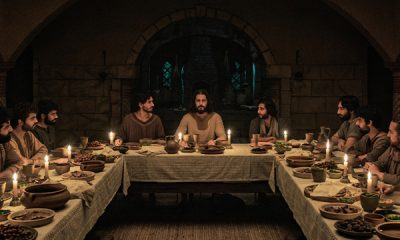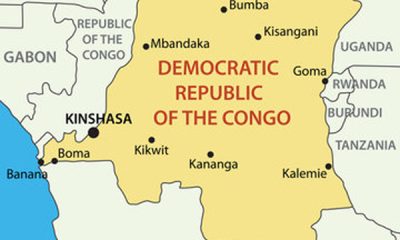Hot News
Kitchen Tips

* while making the dough of puri add little milk to it,puri will be very soft.
* While making Green chatni ( Fudina & Dhania ) Add 2-3 spoon card in it. Its becomes tasty & attractive colour.
* when u make green gravy or green vegetable put a little bit of sugar in the oil n then add masalaas.
* To store green chillies longer,remove the stalk and keep in tight glass bottles in the fridge.
* To save your sugar from ants put some cloves in the jar.
* when u make roti or chpati or paratha , put 1 medium spoon yogurt in dough [ aata ],insted of oil, u will make soft roti,without oil .
* Keep boiled eggs in cold water for 5 minutes, this will make removal of the shell easier.
* Boiled eggs will last longer, if you store the shelled eggs in a bowl of cold water in a refrigerator.
* Keep the gas stove in sim mode, after the dish gets the boiling state. Use the small burner always. So yr cylinder comes for long days.
* Barley powder will increase the taste of meat and vegetable curries.
* You can make tasty chappathi by mixing equal proportion of wheat flour and barley.
* Adding turmeric will help pickles from getting spoilt.
* Leafy vegetables will remain fresh longer, if wrapped in news papers when you are storing.
* When you cook dal add some refined oil or garlic. It will reduce gas trouble.
* Green peas will retain their original colour, if you add a pinch of sugar while boiling.
* If the curd is too sour, add 4 cups of water to it. After half an hour, remove the water collected on top
* To adjust salt in curries add roasted rice powder.
* Add 1/2 teaspoon of baking soda while mixing the dough for ‘chappathi’ to make it soft.
* Add a pinch of sugar while cooking spinach, it will retain its green colour.
* If you want to make crispy potatoes or banana chips, sprinkle salt water over them while frying.
* If u want a thick gravy add some maida to few tablespoons of water and mix well till maida dissolves, add this to loose gravy and it will become thick.
* To cook onions fast add little salt or sugar while frying them in oil.
* If salt is more in dish, then add some tomato juice in it. It will make the salt less..
* Garlic skin comes off easily if the garlic flakes are warmed a little before peeling.
* Before frying the potatoes just soak the potato pieces in the buttermilk and allow them 2 fry,it will be very tasty and soft.
* Mix some vinegar before frying the fish, it will make good taste.
* If u cut brinjal for cooking and keep, it turns black so to avoid this put some salt in water and keep the brinjal in it,this will not turn them black .
* While making dough of chapati add little milk and oil,it will be very soft.
Hot News
ക്രൈസ്തവ പീഡനം രൂക്ഷമായ ആഗോള രാജ്യങ്ങളുടെ പട്ടികയില് ഇന്ത്യ പതിനൊന്നാം സ്ഥാനത്ത്
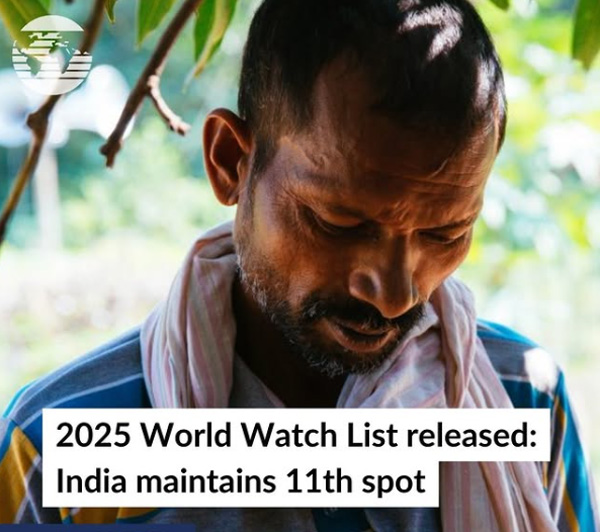
വാഷിംഗ്ടണ് ഡിസി: ആഗോള തലത്തില് ക്രൈസ്തവര്ക്ക് നേരെയുള്ള പീഡനം സംബന്ധിച്ച് അമേരിക്ക ആസ്ഥാനമായ ഓപ്പണ് ഡോഴ്സിന്റെ പുതിയ റിപ്പോര്ട്ടില് ഇന്ത്യയുടെ സ്ഥാനവും ചര്ച്ചയാകുന്നു. ക്രൈസ്തവ പീഡനം രൂക്ഷമായ രാജ്യങ്ങളുടെ പട്ടികയില് പതിനൊന്നാം സ്ഥാനത്താണ് ഇന്ത്യയെന്ന് ഇവാഞ്ചലിക്കൽ സംഘടനയായ ‘ഓപ്പണ് ഡോഴ്സ്’, ഇക്കഴിഞ്ഞ ദിവസം പുറത്തുവിട്ട വേൾഡ് വാച്ച് ലിസ്റ്റ് 2025 (WWL) റിപ്പോര്ട്ടില് പറയുന്നു. താലിബാന് തീവ്രവാദികള് ഭരിക്കുന്ന അഫ്ഗാനിസ്ഥാന് ക്രൈസ്തവ പീഡനം രൂക്ഷമായ രാജ്യങ്ങളുടെ പട്ടികയില് പത്താം സ്ഥാനത്താണ്. ഇതിന് തൊട്ടുപിന്നിലാണ് ഇന്ത്യ. തീവ്ര ഇസ്ലാമിക രാജ്യമായ സൌദി അറേബ്യയാണ് പന്ത്രണ്ടാം സ്ഥാനത്ത്.
ഭാരതത്തിന്റെ ക്രൈസ്തവ വിരുദ്ധ പീഡനത്തിന്റെ തോത് നൂറില് 84 എന്ന രീതിയിലാണ് ഓപ്പണ് ഡോഴ്സ് മാര്ക്ക് ചെയ്തിരിക്കുന്നത്. കഴിഞ്ഞ വര്ഷത്തെ അപേക്ഷിച്ച് ഈ തോത് 1% ഉയര്ന്നിട്ടുണ്ടെന്നതും ശ്രദ്ധേയമാണ്. ഹിന്ദു ദേശീയവാദം ക്രൈസ്തവര്ക്ക് ഭീഷണിയാകുന്നുണ്ടെന്നും ഈ ചിന്താഗതി രാജ്യത്തുടനീളം അക്രമാസക്തമായ ആക്രമണങ്ങൾക്കു വഴി തെളിയിച്ചിട്ടുണ്ടെന്നും അധികാര നേതൃനിരയില് ഉള്ളവര് ആകുമ്പോള് ആക്രമണ നിരക്ക് വര്ദ്ധിക്കുകയാണെന്നും സംഘടന ചൂണ്ടിക്കാട്ടുന്നു. ദേശീയ തെരഞ്ഞെടുപ്പിന്റെ പശ്ചാത്തലത്തിലും ക്രൈസ്തവര്ക്ക് നേരെ ആക്രമണങ്ങള് നടന്നു. കൂടുതൽ സംസ്ഥാനങ്ങൾ മതപരിവർത്തന വിരുദ്ധ നിയമങ്ങൾക്കു പ്രാധാന്യം നല്കിയെന്ന് ഓപ്പണ് ഡോഴ്സ് ചൂണ്ടിക്കാട്ടുന്നു.
വിശ്വാസം സാക്ഷ്യപ്പെടുത്തുന്ന ഏതൊരു ക്രിസ്ത്യാനിയെയും കുറ്റാരോപിതരാക്കാനും ഭീഷണിപ്പെടുത്താനും ഉപദ്രവിക്കാനും കഴിയുന്ന അന്തരീക്ഷം വിവിധയിടങ്ങളില് സൃഷ്ടിച്ചു. ഉത്തരേന്ത്യൻ സംസ്ഥാനമായ ഉത്തർപ്രദേശ് നിലവിലുള്ള മതപരിവർത്തന വിരുദ്ധ നിയമം കർശനമാക്കി. ജീവപര്യന്തം തടവ് വരെ ഈ സംസ്ഥാനത്തു ചേര്ത്തുവെന്നും ‘ഓപ്പണ് ഡോഴ്സ്’ പറയുന്നു. അതേസമയം പ്രാദേശിക പങ്കാളികളുമായി ചേര്ന്ന് ഭാരതത്തിലെ പീഡിത ക്രൈസ്തവര്ക്ക് അടിയന്തര സഹായവും, പീഡന അതിജീവന പരിശീലനം, ഉപജീവന-സാമൂഹിക വികസന പദ്ധതികളും ലഭ്യമാക്കുന്നുണ്ടെന്നും ഓപ്പണ് ഡോഴ്സ് വ്യക്തമാക്കി.
കടപ്പാട് :പ്രവാചക ശബ്ദം
The 2025 World Watch List with Open Doors USA was released yesterday. It rates the top 50 countries around the world where it is most difficult to be a Christian. The World Watch List is different from Global Christian Relief’s Red List, which lists 25 of the most severe nations across five separate categories for Christian persecution.
On the newly released World Watch List, many were watching India in particular to see how it would rank. For the second year in a row, India remains in 11th place, hovering just outside the top 10.
Regan Miller with Mission India offers some perspective: “The fact that it stayed the same probably just means that the other countries have remained worse, which is tragic, but it doesn’t mean that India is doing a whole lot better.”
For example, “There are a handful of states in India that have what is called anti-conversion laws. The laws vary slightly by state. But in general, they require that if you are going to change religions, you or the person leading you to the other religion gives official notice,” explains Miller.
“If…they find out that you’ve changed religions without giving official notice, then you or the person leading you to a new faith can be fined or given prison time.”
Persecution from Family and Community
Christian persecution in India also takes place on a family and community level. Tribal Christians in Manipur state are still targeted and attacked for their faith.
Miller shares a story that illustrates what often happens when a family member converts to Christianity.
In November, one of Mission India’s adult literacy teachers met a young couple and began sharing the Gospel with them. The man, Bulesh, was raised by his mother in an animist background. But eventually, Bulesh and his wife chose to follow Jesus.
“The very next morning, Bulesh’s mom and two other women from the village chased Bulesh and his family out of their home,” says Miller.
“The couple, thankfully, was able to find refuge at the home of a local Christian. Church members have been supporting them and giving them food and helping meet their daily needs. But what a difficult thing to see that you could have your own mom chase you away the very next day because you received Christ.”
Prayer Resources
So what can you do with the 2025 World Watch List? Pray through it.
Mission India has resources to inform your prayers for India, specifically! Connect at their website here.
Miller says, “You can sign up for the daily prayer prompt, and we will send you a daily email every morning with a really simple prayer with something that you can pray for about a specific person in India who is involved in our ministry.”
Ask God to give persecuted Indian believers wisdom as they navigate challenging circumstances because of their faith. Pray for their ability to offer forgiveness and grace, and to show the love of Christ.
Hot News
പത്തു കല്പ്പനകളുടെ ശിലാഫലകത്തിന് ലേലത്തിൽ ലഭിച്ചത് 50 ലക്ഷം ഡോളർ
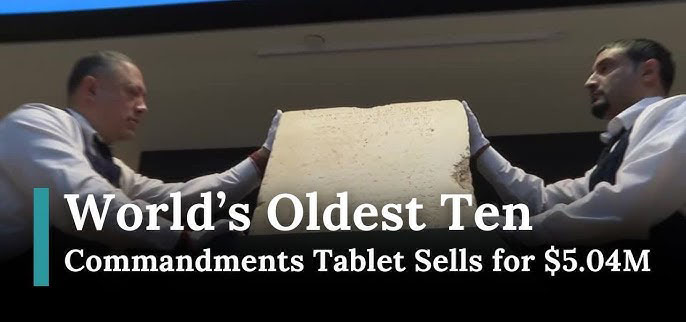
ന്യൂയോർക്ക്: ബൈബിളിലെ പത്തു കല്പനകള് രേഖപ്പെടുത്തിയ ചരിത്രത്തിലെ ഏറ്റവും പുരാതനമായ ശിലാഫലകത്തിനു ലേലത്തിൽ ലഭിച്ചത് 50 ലക്ഷം ഡോളർ. ബൈബിളിലെ കല്പ്പനകൾ രേഖപ്പെടുത്തിയ, അറിയപ്പെടുന്നതും ഏറ്റവും പഴക്കമുള്ളതുമായ ശിലാഫലകമാണിത്. ഏകദേശം 20 ലക്ഷം ഡോളറാണ് പ്രതീക്ഷിച്ചിരിന്നത്. എന്നാല് ഇരട്ടിയിലധികം തുകയ്ക്കാണ് ഫലകം വിറ്റുപോയതെന്ന് ലേല സ്ഥാപനമായ സോത്തെബി വ്യക്തമാക്കി.
എ.ഡി 300-800ന് ഇടയില് റോമന് – ബൈസന്റൈന് കാലഘട്ടത്തില് നിര്മ്മിക്കപ്പെട്ട ഈ ശിലാഫലകം റെയില്പാതയുടെ നിര്മ്മാണത്തിനിടെ 1913-ല് ഇസ്രയേലില് നിന്നുമാണ് കണ്ടെത്തിയത്. പാലിയോ – ഹീബ്രു ഭാഷയിലാണ് ഫലകത്തില് ദൈവകല്പ്പനകള് ആലേഖനം ചെയ്തിരിക്കുന്നത്. പുരാതന സിനഗോഗുകളുടെയും, ദേവാലയങ്ങളുടെയും പേരില് പ്രസിദ്ധമാണ് ഈ ശിലാഫലകം കണ്ടെത്തിയ സ്ഥലം.
ഫലകം പുരാവസ്തുവിന്റെ സമാനതകളില്ലാത്ത പ്രാധാന്യത്തെ പ്രതിഫലിപ്പിക്കുകയാണെന്നും അതിനാലാണ് ഇത്രയും തുക ലഭിച്ചതെന്നും സോത്തെബിയുടെ പുസ്തകങ്ങളുടെയും കൈയെഴുത്തു പ്രതികളുടെയും തലവനായ റിച്ചാർഡ് ഓസ്റ്റിൻ പ്രസ്താവിച്ചു. 400-നും 600-നും ഇടയില് റോമന് അധിനിവേശക്കാലത്തോ, പതിനൊന്നാം നൂറ്റാണ്ടില് കുരിശുയുദ്ധക്കാലത്തോ ഈ സ്ഥലം മണ്മറഞ്ഞുപോയിരിക്കാം എന്നാണ് അനുമാനം. ക്രിസ്ത്യന് – യഹൂദ പാരമ്പര്യങ്ങള്ക്ക് സമാനമായ രീതിയില് 20 വരികളിലായിട്ടാണ് ഇതില് കല്പ്പനകള് ആലേഖനം ചെയ്തിരിക്കുന്നത്.
കടപ്പാട് :പ്രവാചക ശബ്ദം
Hot News
ഘാനയില് 3 ഇന്ത്യന് കപ്പൂച്ചിന് വൈദികര്ക്ക് ക്രൂരമര്ദ്ദനം.
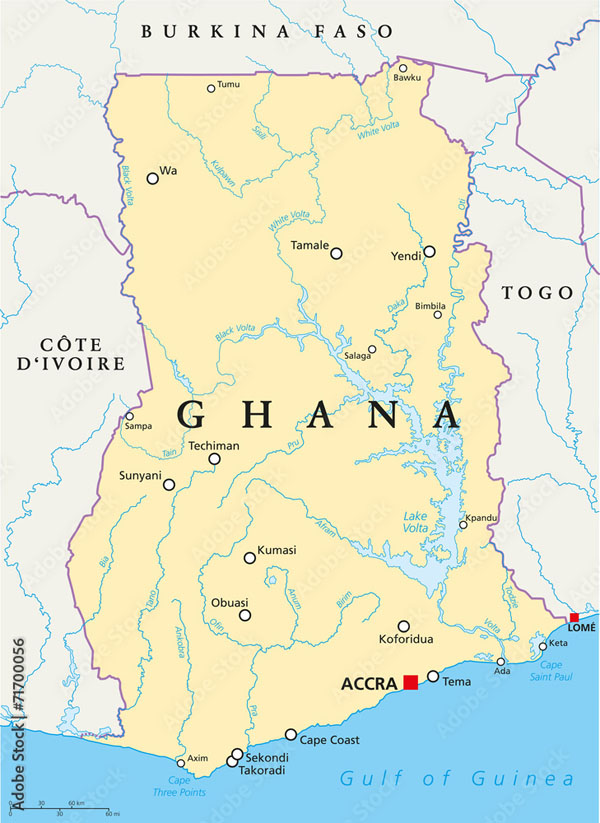
ഘാന: പടിഞ്ഞാറന് ആഫ്രിക്കന് രാജ്യമായ ഘാനയിലെ കിഴക്കന് വോള്ട്ട മേഖലയിലെ എന്ക്വാന്റയില് 3 ഇന്ത്യന് കപ്പൂച്ചിന് വൈദികര്ക്ക് ക്രൂരമര്ദ്ദനം. ബുള്ഡോസര് ഇന്ധനം നിറക്കുവാന് പെട്രോള് പമ്പില് എത്തിച്ചപ്പോഴാണ് ഫ്രാന്സിസ്കന് കപ്പൂച്ചിന് വൈദികരായ ഫാ. റോബിൻസൺ മെൽക്കിസ്, ഫാ. ഫ്രാങ്ക് ഹെൻറി ജേക്കബ്, ഫാ. മാർട്ടിൻ ജോർജ് എന്നിവരാണ് ഇക്കഴിഞ്ഞ ഡിസംബര് 11ന് ക്രൂരമര്ദ്ദനത്തിനിരയായത്. ബുള്ഡോസര് മോഷ്ടിച്ചു എന്ന് പറഞ്ഞുകൊണ്ടായിരുന്നു ആക്രമണം.
2005 മുതല് ഘാനയില് മിഷ്ണറി പ്രവര്ത്തനം നടത്തിവരുന്ന ഈ വൈദികര് ഓട്ടി മേഖലയിലെ എന്ക്വാണ്ട-നോര്ത്ത് ജില്ലയിലെ ക്പാസായിലാണ് താമസിക്കുന്നത്. എന്ക്വാണ്ട സൗത്ത് ഇടവകയിലെ ചൈസോയില് ഫോര്മേഷന് ഭവനം പണിയുന്നതിനായിരുന്നു ബുള്ഡോസര് വാടകക്കെടുത്തത്. ബുള്ഡോസറിന് വാടകയായി പറഞ്ഞിരിന്ന 9700 ഘാന സെഡി നല്കിയ ശേഷം എന്ക്വാണ്ട സൗത്ത് മുനിസിപ്പാലിറ്റിയിലെ രണ്ടു ഉദ്യോഗസ്ഥര്ക്കൊപ്പം ചൈസോയിലെ പെട്രോള് സ്റ്റേഷനില് ഇന്ധനം നിറക്കുവാന് എത്തിച്ചപ്പോഴായിരുന്നു ആക്രമണം.
ഏതാണ്ട് അരമണിക്കൂറോളം നീണ്ട ആക്രമണത്തില് നിന്നും ഘാനയിലെ ഇമിഗ്രേഷന് വിഭാഗത്തിലെ ഉദ്യോഗസ്ഥരെത്തിയാണ് ഇവരെ രക്ഷിച്ചത്. മോഷണം ആരോപിച്ചതിനെ തുടര്ന്നു പോലീസ് ഇവരെ കസ്റ്റഡിയിലെടുത്തെങ്കിലും ജസ്സിക്കന് രൂപത ഇടപെട്ടതിനെതുടര്ന്ന് വിട്ടയക്കുകയും ആവശ്യമായ ചികിത്സ നല്കുകയുമായിരുന്നു. മര്ദ്ദനത്തെ തുടര്ന്ന് ഫാ. ഫ്രാങ്ക് ഹെൻറി ജേക്കബിന്റെ ഒരു ചെവിയുടെ കേള്വി പൂര്ണ്ണമായും നഷ്ടപ്പെട്ടിരിക്കുകയാണ്. വിദഗ്ദ ചികിത്സക്കായി അദ്ദേഹത്തെ യെണ്ടി ആശുപത്രിയില് പ്രവേശിപ്പിച്ചു.
ഇവര്ക്കൊപ്പമുണ്ടായിരുന്ന മുനിസിപ്പല് ഉദ്യോഗസ്ഥര്ക്കും മര്ദ്ദനമേറ്റിട്ടുണ്ട്. സംഭവത്തേത്തുടര്ന്ന് സുന്യാനി മെത്രാനും, ഘാന മെത്രാന് സമിതിയുടെ പ്രസിഡന്റുമായ ബിഷപ്പ് മാത്യു ക്വാസി ഗ്യാംഫിയുമായി ഘാന പോലീസ് മേധാവിയെ ബന്ധപ്പെട്ടു. സംഭവത്തേക്കുറിച്ച് അന്വേഷിക്കുമെന്നും, അക്രമികളെ അധികം താമസിയാതെ തന്നെ നിയമത്തിന്റെ മുന്നില്ക്കൊണ്ടുവരുമെന്നും ഉറപ്പ് നല്കുകയും ചെയ്തിട്ടുണ്ട്. ഇതിനിടെ, എൻക്വാണ്ട-സൗത്ത് മണ്ഡലത്തിലെ നാഷണൽ ഡെമോക്രാറ്റിക് കോൺഗ്രസ് (എന്.ഡി.സി) ബ്രാഞ്ച് നേതൃത്വം മര്ദ്ദനത്തിനിരയായ വൈദികരോടും, രൂപതയോടും ക്ഷമാപണം നടത്തിയിട്ടുണ്ട്. ഘാനയുടെ സമഗ്രവികസനത്തില് കത്തോലിക്ക സഭക്കും വൈദികര്ക്കും നിര്ണ്ണായകമായ പങ്കാണുള്ളത്.
Three Indian Franciscan Capuchins, Father Robinson Melkis, Father Frank Henry Jacob, and Father Martin George, have been in Ghana since 2005 on missionary work. The priests live and work in Kpassa, in the Nkwanta-North district of the Oti region. They rented a bulldozer from the parish of Nkwanta-South for the building of a formation house in Chaiso.
On December 11, after they rented the bulldozer, the three priests, accompanied by two municipal officials, stopped their travelling to fill up their vehicles. This is the point when the attack happened. While in the gas station, a group of locals gathered and accused the religious of stealing the bulldozer. The mob gathered, attacked the friars and the officials, and beat them up severely. Their beating only stopped after officials from the Ghanaian emigration office showed up 30 minutes later.
The officials might have saved them, but their hardships did not end. The angry mob filed a complaint with the police accusing the religious of stealing the bulldozer. The police took the religious into custody, but the vicar general of the Jasikan diocese intervened, and they were released. They were transported to the hospital where they received the needed treatment. Father Frank Henry Jacob was in the worst state and lost hearing in one of his ears.
The chief of police in Ghana contacted the president of the Ghanaian Bishops’ Conference after the incident, assuring him that the incident is going to be investigated and all those responsible for the attack will be brought to justice.
-

 Travel9 months ago
Travel9 months agoയാക്കൂസ കരിഷ്മ:ഓല സ്കൂട്ടറിനേക്കാൾ വിലക്കുറവിൽ കുഞ്ഞൻ കാർ; സിറ്റി യാത്രകൾക്ക് ഇനി ഇവൻ മതിയാവും
-

 Movie3 months ago
Movie3 months agoFor KING + COUNTRY Stars’ Big Plan to Bring Message of Jesus, ‘Redemption of Humanity’ to People Across America
-
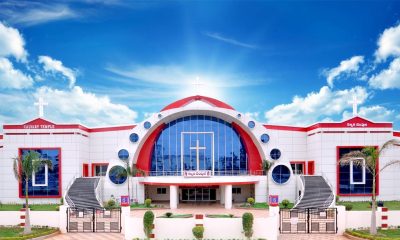
 National12 months ago
National12 months ago300,000-Member Indian Church to Plant 40 More Megachurches
-

 National12 months ago
National12 months agoനെയ്തേലിപ്പടി ക്രൂസേഡിന് അനുഗ്രഹീത സമാപ്തി
-

 Tech8 months ago
Tech8 months agoചിത്രങ്ങൾ എഡിറ്റ് ചെയ്യാം; വാട്സ്ആപ്പിലെ ‘നീല വളയം’ സ്മാർട്ടാകുന്നു, കാര്യമായ മാറ്റങ്ങൾ
-

 Movie3 months ago
Movie3 months agoFor KING + COUNTRY Stars’ Big Plan to Bring Message of Jesus, ‘Redemption of Humanity’ to People Across America
-

 Movie11 months ago
Movie11 months agoActor Ryan Phillippe ‘Craving’ Relationship With God After Movie About Christian Missionary
-

 Articles9 months ago
Articles9 months ago8 ways the Kingdom connects us back to the Garden of Eden






